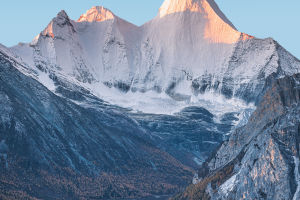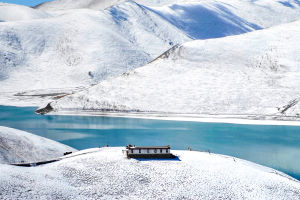Prairie is a type of earth ecosystem. It is divided into various types, such as tropical grasslands and temperate grasslands. The grassland is the most widely distributed vegetation type on the earth.
The cause of the grassland is that when the soil layer is thin or the precipitation is small, the herbaceous plants are less affected, and the woody plants cannot grow widely.
According to data from the World Natural Research Institute, the world's grassland is mainly distributed in the middle of the forest and desert, with a total area of 5.25 billion hectares, accounting for 40.5% of the global land area (except Greenland and Antarctica).
The distribution of grasslands on all continents is not balanced. Africa, Asia, Latin America, and Oceania account for a large proportion, and Europe is the smallest.
Grassland is a zone type. Although the grasslands on the earth are distributed from temperate to tropical, they occupy a fixed position on the axis of the climate. In the cold temperature zone, a large area of grasslands is distributed with a large area of 150 to 200 mm. In the tropics, the rare tree grassland is mainly distributed in areas with rainfall from 800 to 1400 mm.
Prairie is the most widely distributed vegetation type on the earth. It is the second-largest ecosystem of land in the forest ecosystem and is called "Earth Skin". The prairie is not only an important animal husbandry production base but also has very ecological importance.
The grassland landscape is naturally magnificent and full of regional characteristics. Grassland plays an important role in the protection of biological diversity, climate change, and sustainable human development.
Prairie is one of the largest carbon repositories on the earth, accounting for 33%-34% of the total organic carbon on the earth. The grassland is the area that is currently most affected by human activities. The grassland ecosystem has an extremely important role in maintaining global and regional ecological balance.
The grassland ecology is determined by geography and climatic conditions. The prairie ecosystems mainly include plants, wild animals, humans, and livestock breeding.
Prairie is a typical representative of the ecosystem. It is a special geographical environment and ecosystem, including natural elements such as grass, trees, water, and beasts.
Prairie's ecosystem is an important part of maintaining natural ecological balance. It not only provides biodiversity but also provides important support for human survival and development.
The scenery of the grassland can be said to be unparalleled. Here, the vast earth and the vast sky blend, forming a magnificent natural landscape.
The green vegetation on the grassland and golden yellow land contrast with each other, becoming an oil painting like a natural gallery. Whether standing on the grassland or overlooking the entire grassland, it will be shocked by its beauty.
The grassland ecosystem also faces some problems. Factors such as excessive grazing, excessive development, and artificial destruction are all affecting the healthy development of the grassland.
The grasslands in many areas have been affected by excessive development and environmental pollution, causing the disappearance of many grassland vegetation and the destruction of ecological balance.
To protect the grassland's ecosystem, we need to take measures to strengthen the protection and management of grasslands.


